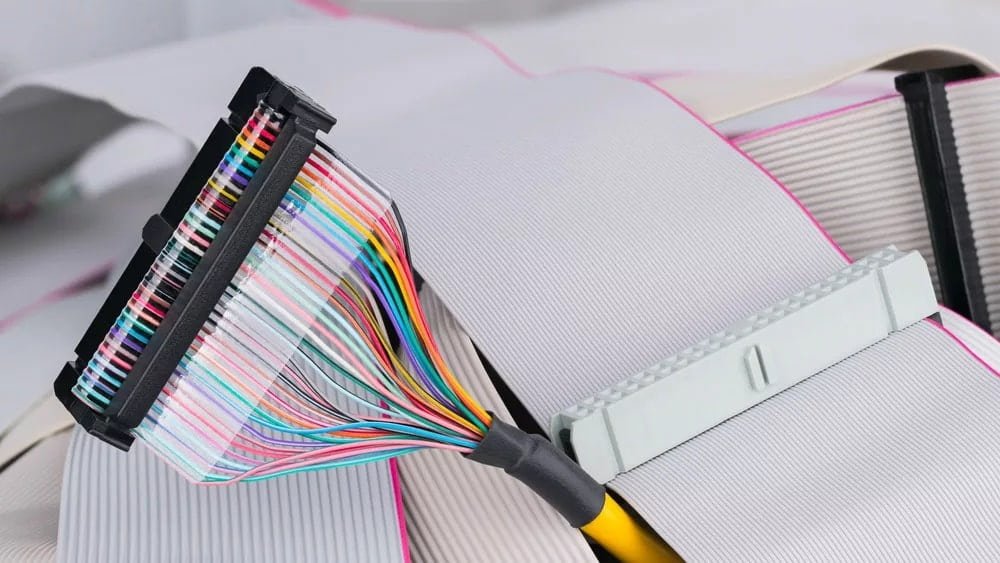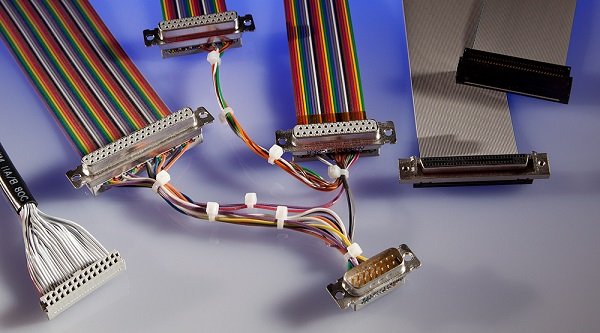The 1936239 on Flat Ribbon Cable is a vital component widely used in electronic devices, facilitating efficient data transmission and connectivity. Despite its importance, many discussions around this connector lack depth, technical specifications, and practical insights.
This article aims to thoroughly examine the 1936239 Flat Ribbon Cable, covering its specifications, applications, advantages, potential drawbacks, and much more.
Understanding the 1936239 Flat Ribbon Cable:
The 1936239 Flat Ribbon Cable is designed for applications requiring flexible and compact connections. Its unique flat structure allows efficient routing in tight spaces, making it a preferred choice in various electronic devices.

Technical Specifications
To fully appreciate the capabilities of the 1936239 Flat Ribbon Cable, let’s delve into its technical specifications:
- Wire Gauge:
Typically, the cable features wires of various gauges, affecting the current-carrying capacity. It is crucial to select the appropriate gauge for the specific application.
- Voltage Rating:
The cable is rated for specific voltage levels, ensuring safe operation in various environments. Knowing the voltage rating helps in preventing damage during operation.
- Data Transfer Rates:
The cable supports high-speed data transmission, making it suitable for applications requiring rapid communication between devices. Depending on the specific configuration, typical rates range from 1 Mbps to several Gbps.
Real-World Applications
The 1936239 on Flat Ribbon Cable finds use in numerous applications, including:
- Consumer Electronics:
Televisions, computers, and gaming consoles rely on flat ribbon cables for internal connections, ensuring efficient data flow.
- Industrial Equipment:
Robotics and automation systems use these cables for reliable communication between components, essential for seamless operation.
- Telecommunications:
The cable is used in networking devices to facilitate data transfer, supporting modern communication infrastructures.
Advantages of 1936239 on Flat Ribbon Cable

Space Efficiency
The cable’s flat design allows for compact installations, making it ideal for applications with limited space, such as within tightly packed electronic devices.
Flexibility
The cable’s structure enables easy bending and routing without compromising performance. This flexibility is beneficial in applications where space and layout may change.
Cost-Effectiveness
Compared to other cabling solutions, the 1936239 Flat Ribbon Cable is often more affordable, providing a cost-effective option for manufacturers and developers.
High Data Transfer Rates
The cable supports high-speed data transmission, making it suitable for applications requiring rapid communication, such as computers, telecommunications, and consumer electronics.
Ease of Installation
Flat ribbon cables are generally easier to install than round cables. They can also be laid flat, simplifying organization and routing in complex systems.
Reduced Signal Interference
The parallel arrangement of wires in flat ribbon cables can help minimize crosstalk and interference, enhancing signal transmission quality.
Customizable Lengths
The cable can be easily manufactured in various lengths to meet specific application requirements, allowing for versatility in design.
Lightweight
The flat ribbon cable is typically lighter than traditional round cables, reducing the assembly’s overall weight and facilitating easier handling and installation.
Wide Application Range
This cable is suitable for a variety of applications, including consumer electronics, industrial equipment, and telecommunications, showcasing its versatility across different sectors.
Durability
Flat ribbon cables are often made from materials that provide durability and resistance to wear, making them suitable for applications that require long-term reliability.
Read: A Guide of Everything You Need to Know About “im gsrc.ru”
Potential Drawbacks of 1936239 on Flat Ribbon Cable:

Limited Durability in Harsh Environments
Flat ribbon cables may not withstand extreme temperatures, moisture, or chemical exposure, as well as other cable types, limiting their use in harsh industrial settings.
Bending Radius Limitations
Although flexible, flat ribbon cables have a minimum bending radius that, if exceeded, can lead to damage or reduced performance. This makes them less suitable for applications requiring tight turns.
Potential for Signal Interference
While flat ribbon cables can reduce crosstalk, they may still be susceptible to interference from nearby electromagnetic sources, especially in environments with high electromagnetic interference (EMI).
Physical Space Constraints
Although they save space in one dimension, flat ribbon cables can require more vertical space when routed due to their flat design, which may not be suitable in all configurations.
Complexity in Connector Design
The connectors with flat ribbon cables may be more complex and require specific hardware, potentially leading to compatibility issues with standard connectors.
Limited Mechanical Strength
The flat design may not provide the same mechanical strength and protection level as round cables, making them more vulnerable to physical damage in specific applications.
Potential Difficulty in Maintenance
In dense or complex installations, accessing flat ribbon cables for troubleshooting or replacement can be more challenging than accessing round cables that can be easily rerouted.
Compatibility Issues
Flat ribbon cables may not be compatible with all devices, particularly older equipment requiring specific connections or cabling.
Signal Degradation Over Long Distances
While suitable for short connections, flat ribbon cables may experience signal degradation over longer distances, limiting their use in extensive network setups.
Aesthetic Concerns
The flat appearance of these cables may not be visually appealing in applications where aesthetics are a concern, leading to potential design limitations.
Visual Aids for Better Understanding:

Incorporating diagrams and images can significantly enhance comprehension. For example, a chart showing the internal structure of the 1936239 Flat Ribbon Cable can clarify how data is transmitted through the different wires.
Additionally, images illustrating installation processes and applications can aid users in visualizing their usage.
User Feedback and Testimonials:
Incorporating user feedback can provide real-world insights into the 1936239 Flat Ribbon Cable’s performance. Many users have reported high satisfaction due to its reliability and ease of use.
Testimonials from engineers and technicians can also offer valuable perspectives on installation challenges and best practices.
Read: Bridget Rooney – Philanthropist, Actress, and Family Woman!
Conclusion:
The 1936239 on Flat Ribbon Cable is a crucial component in modern electronics, offering numerous advantages while also posing some challenges. This article provides a well-rounded understanding of the cable by addressing its technical specifications, applications, benefits, and drawbacks.
Whether you are an engineer, technician, or enthusiast, a deeper insight into the 1936239 Flat Ribbon Cable can empower you to make informed project decisions.
With the right knowledge and consideration of user feedback, the 1936239 Flat Ribbon Cable can continue to enhance connectivity across various applications significantly.
FAQs:
What is the maximum temperature rating for the 1936239 on Flat Ribbon Cable?
The maximum temperature rating for the 1936239 flat ribbon cable typically ranges from -20°C to 80°C, but it’s essential to check the manufacturer’s specifications for precise ratings.
Can the 1936239 on Flat Ribbon Cable be used for data transmission?
Yes, the 1936239 flat ribbon cable is suitable for data transmission applications, provided that the cable specifications match the requirements of the devices it connects.
What types of connectors are compatible with the 1936239 on Flat Ribbon Cable?
The 1936239 flat ribbon cable typically uses IDC (Insulation Displacement Connector) or pin header connectors, but compatibility depends on the specific application.
Is the 1936239 on Flat Ribbon Cable flexible enough for tight installations?
While the 1936239 cable is flexible, it may not be ideal for highly tight installations due to its minimum bending radius, which should be adhered to to prevent damage.
How does the 1936239 on Flat Ribbon Cable cost compare to other cable types?
The cost of the 1936239 flat ribbon cable can vary based on the manufacturer and length. Still, it is generally competitively priced compared to similar flat cables, offering cost-effective solutions for many applications.
What is the typical insulation material used in the 1936239 on Flat Ribbon Cable?
The insulation material for the 1936239 flat ribbon cable is usually made of PVC (Polyvinyl Chloride) or other thermoplastic materials, which provide good electrical insulation properties.
Are any special installation tools required for the 1936239 on Flat Ribbon Cable?
Standard tools are typically sufficient for installation; however, using an IDC tool can simplify the connection process and ensure proper connector seating.
Can the 1936239 on Flat Ribbon Cable be used in outdoor applications?
It is generally not recommended for outdoor use unless specified, as flat ribbon cables may lack the necessary weatherproofing and UV resistance.
What are the typical applications for the 1936239 on Flat Ribbon Cable?
Internal connections in computers, printers, and other electronic devices, as well as industrial automation systems, are common applications.
How can I determine the appropriate length of the 1936239 on Flat Ribbon Cable for my project?
To determine the appropriate length, measure the distance between connection points and consider any routing paths. Always add extra length to accommodate bends or adjustments as needed.
Read:





